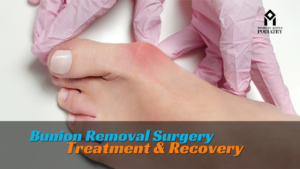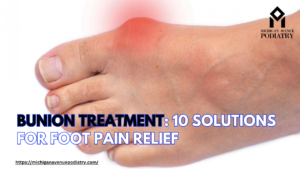As podiatric practitioners, understanding the nuances between common foot maladies like bunions and big toe arthritis is pivotal. These conditions, although distinct, share symptoms that can perplex patients and clinicians alike. Let’s delve into the depths of these ailments, discerning their disparities and elucidating effective treatment modalities.
Bunion Basics:
Bunions, medically termed as hallux valgus, manifest as a bony prominence at the base of the big toe, causing it to deviate towards the other toes. This misalignment often results from prolonged pressure or abnormal foot mechanics. Individuals with bunions may experience pain, swelling, and redness around the affected joint. As the condition progresses, footwear may exacerbate discomfort, particularly in shoes with narrow toe boxes.
Symptoms and Signatures of Bunions:
Distinctive symptoms of bunions include:
- Visible bump at the base of the big toe.
- Swelling and inflammation around the joint.
- Pain or discomfort, aggravated by shoe pressure.
- Limited range of motion in the affected toe.
- Corns or calluses due to friction.
Understanding Big Toe Arthritis:
On the other end of the spectrum lies big toe arthritis, scientifically termed as hallux rigidus. This degenerative joint condition affects the metatarsophalangeal (MTP) joint of the big toe, causing stiffness, pain, and diminished mobility. Unlike bunions, which primarily involve structural deformities, big toe arthritis primarily stems from wear and tear of the joint cartilage, leading to inflammation and osteophyte formation.
Symptomatic Signals of Big Toe Arthritis:
Key indicators of big toe arthritis encompass:
- Stiffness and limited range of motion in the big toe.
- Pain and tenderness, especially during weight-bearing activities.
- Swelling and inflammation around the MTP joint.
- Difficulty wearing shoes with rigid soles.
- Alteration in gait patterns to alleviate pressure on the affected joint.
Distinguishing the Differences:
While both bunions and big toe arthritis may present with overlapping symptoms such as pain, swelling, and altered gait mechanics, discerning their unique features is imperative for accurate diagnosis and tailored treatment plans.
Differentiation Matrix:
| Feature | Bunions | Big Toe Arthritis |
|---|---|---|
| Etiology | Structural deformity | Joint degeneration |
| Location | Hallux valgus angle widened joint space | Metatarsophalangeal joint |
| Joint Involvement | Soft tissue and bone | Cartilage and bone |
| Range of Motion | Initially preserved, may decrease over time | Decreased range of motion |
| Radiographic Findings | Hallux valgus angle, widened joint space | Osteophyte formation, joint space narrowing |
| Treatment Focus | Symptom management, surgical correction if severe | Conservative measures, surgical intervention in advanced cases |
Navigating Treatment Avenues:
Tailoring treatment strategies to address the specific needs of bunions and big-toe arthritis is paramount for optimal outcomes.
Bunion Management:
- Footwear modification: Choosing shoes with wide-toe boxes to alleviate pressure on the affected joint.
- Orthotic support: Custom orthotics can correct biomechanical abnormalities and redistribute pressure.
- Pain management: Nonsteroidal anti-inflammatory drugs (NSAIDs) and corticosteroid injections may provide symptomatic relief.
- Surgical intervention: In severe cases, bunionectomy procedures may be warranted to realign the toe and alleviate discomfort.
Big Toe Arthritis Interventions:
- Activity modification: Avoiding high-impact exercises and wearing supportive footwear can alleviate symptoms.
- Orthotic devices: Shoe inserts or braces can provide stability and reduce joint stress.
- Medications: Analgesics and intra-articular injections may mitigate pain and inflammation.
- Surgical options: Arthrodesis or joint replacement surgeries may be considered for advanced cases to restore function and alleviate pain.
Collaborating with a Podiatrist:
Consulting a podiatrist is instrumental in navigating the complexities of bunions and big-toe arthritis. These specialized healthcare professionals possess expertise in diagnosing and managing foot conditions, offering personalized care tailored to individual needs.
In Conclusion:
Bunions and big toe arthritis, though distinct in etiology and presentation, share commonalities in symptoms and management. By understanding their unique features and implementing targeted interventions, podiatrists can empower patients to regain mobility and alleviate discomfort associated with these debilitating foot ailments.




